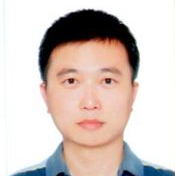Novel Modulation Technology for 6G Communications
A special issue of Sensors (ISSN 1424-8220). This special issue belongs to the section "Communications".
Deadline for manuscript submissions: closed (15 July 2023) | Viewed by 6590
Special Issue Editors
Interests: spatial modulation; OFDM with index modulation; reconfigurable intelligent surface
Special Issues, Collections and Topics in MDPI journals
Interests: error correction coding theory; MIMO; quantum key distribution
Special Issues, Collections and Topics in MDPI journals
Special Issue Information
Dear Colleagues,
The past decade has witnessed tremendous increases in data throughput and the number of connected nodes, and recent studies have also predicted these increases in next-generation networks. These tremendous increases will undoubtedly result in increasingly stringent requirements for spectral efficiency and energy efficiency. In terms of meeting these two requirements, in recent years, novel modulation techniques, such as index modulation, media-based modulation, RIS-based/reflecting modulation, OTFS, and subcarrier number modulation, has attracted researchers’ attention. Different from conventional amplitude-phase modulation schemes, novel modulation employs one or more modulation dimension(s) in addition to a classic amplitude-phase constellation diagram to form a higher-dimensional modulation scheme, which considerably enhances spectral efficiency under proper system configurations.
In the use of novel modulation technology, only a subset of media resources or functional blocks will be activated to form a unique activation pattern. Consequently, the activation pattern per se can be used to modulate an extra bit stream in addition to the bit stream modulated by data constellation symbols. As a paradigm in its infancy, there are still a large number of open research questions awaiting solutions, and further research is highly important so that novel modulation can finally advance to the practical implementation stage. Apart from theoretical research, concerns regarding its practical implementation need to be addressed.
In light of the aforementioned advantages of applying novel modulation in 6G communications and the remaining research problems, this feature topic aims to bring together leading researchers in both academia and industry from diversified backgrounds with original and high-quality publications that address the theoretical and practical issues related to the novel modulation concept. Extended versions of papers published in conferences, symposiums, or workshop proceedings are encouraged to be submitted for consideration.
Topics of interests include, but are not limited to, the following:
- Artificial-intelligence- and learning-technique-assisted novel modulation technology;
- Massive MIMO and reconfigurable intelligent surface (RIS)-assisted novel modulation technology;
- Novel modulation technology in millimeter-wave, terahertz, and optical wireless communications and novel modulation technology for underwater optical/acoustic communications;
- Novel modulation technology with high mobility and physical security and secrecy-related issues of novel modulation technology;
- Novel modulation technology in multi-user and cooperative relay networks and performance analyses for novel modulation-technology-based communication systems;
- Resource allocation and optimization for novel modulation-technology-based communication systems;
- Detection and transceiver designs for novel modulation technology.
Dr. Jun Li
Dr. Xueqin Jiang
Dr. Yuyang Peng
Guest Editors
Manuscript Submission Information
Manuscripts should be submitted online at www.mdpi.com by registering and logging in to this website. Once you are registered, click here to go to the submission form. Manuscripts can be submitted until the deadline. All submissions that pass pre-check are peer-reviewed. Accepted papers will be published continuously in the journal (as soon as accepted) and will be listed together on the special issue website. Research articles, review articles as well as short communications are invited. For planned papers, a title and short abstract (about 100 words) can be sent to the Editorial Office for announcement on this website.
Submitted manuscripts should not have been published previously, nor be under consideration for publication elsewhere (except conference proceedings papers). All manuscripts are thoroughly refereed through a single-blind peer-review process. A guide for authors and other relevant information for submission of manuscripts is available on the Instructions for Authors page. Sensors is an international peer-reviewed open access semimonthly journal published by MDPI.
Please visit the Instructions for Authors page before submitting a manuscript. The Article Processing Charge (APC) for publication in this open access journal is 2600 CHF (Swiss Francs). Submitted papers should be well formatted and use good English. Authors may use MDPI's English editing service prior to publication or during author revisions.
Keywords
- modulation
- channel estimation
- index modulation
- media-based modulation
- RIS
- OTFS
- subcarrier number modulation








